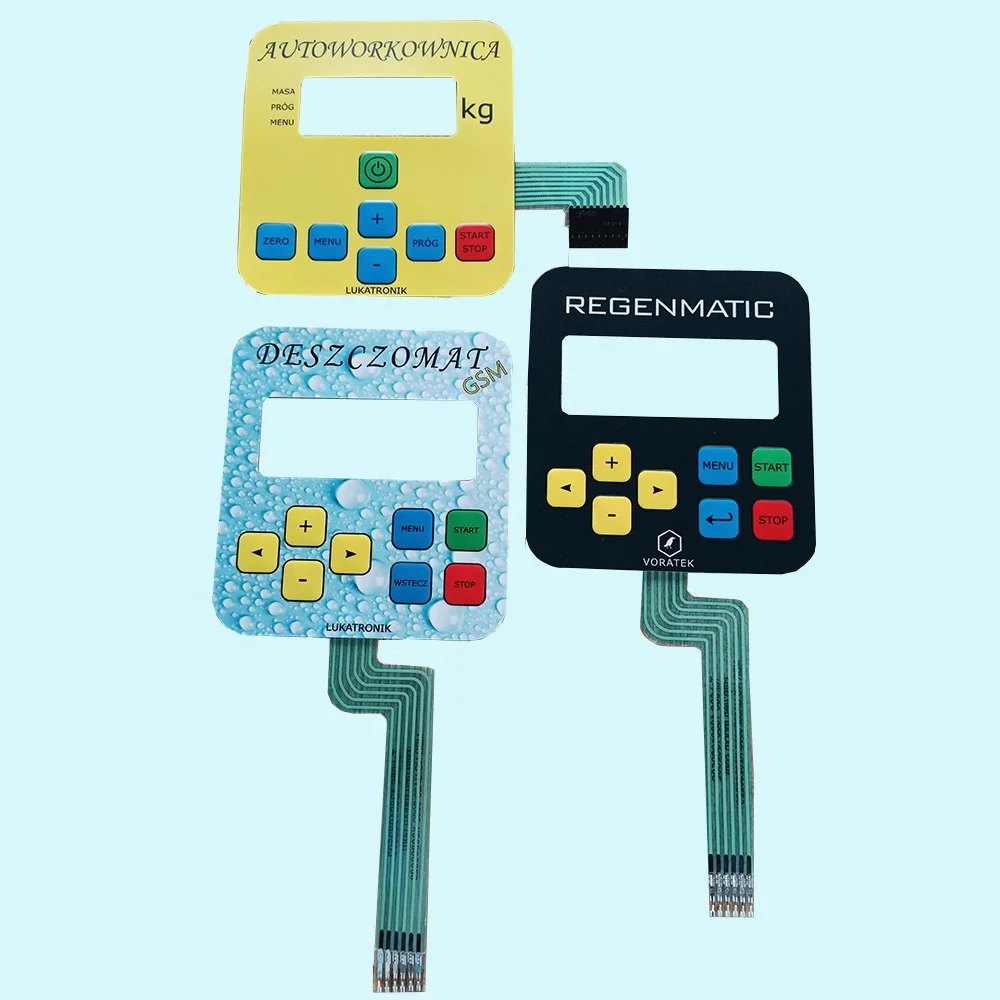Membrane Switch: A Comprehensive Guide to Its Uses and Applications
Membrane Switch: A Comprehensive Guide to Its Uses and Applications
Blog Article
Recognizing Membrane Switches: The Trick to Reputable and long lasting Controls

What Are Membrane Layer Switches?
Membrane switches are an innovative service in the world of individual interface innovation, combining performance and style effortlessly. These tools serve as an interface between users and electronic systems, integrating several elements right into a portable layout. Commonly created from flexible, slim layers of materials, membrane layer switches are created to respond to touch, making it possible for customers to connect with machinery and digital gadgets effectively.
The main aspects of a membrane layer button include a published circuit layer, visuals overlay, and a spacer layer that prevents unexpected activation. The visuals overlay can be customized to mirror brand name identification or user choices, improving aesthetic appeals while making sure functionality. Membrane layer switches are frequently made use of in various applications, including clinical tools, customer electronics, and commercial tools, owing to their durability and resistance to environmental elements such as moisture and dust.
One of the vital advantages of membrane buttons is their ability to withstand damage, making them perfect for high-traffic settings. Furthermore, they are light-weight and call for marginal space, permitting innovative layouts in item development. In general, membrane switches over stand for a effective and functional selection for contemporary electronic interfaces, weding modern technology with user-centric layout concepts.
Exactly How Membrane Switches Work
The procedure of membrane layer switches hinges on a straightforward yet effective device that translates customer input right into digital signals. When an individual presses the switch, the top layer deforms, permitting a conductive component in the circuit layer to make call with a corresponding conductive pad on the underside of the visuals overlay.
The layout of membrane buttons can vary, but they commonly include domes or responsive aspects to supply responses to the customer, improving the general experience - membrane switch. The products used in membrane buttons, such as polyester or polycarbonate, add to their durability and resistance to environmental aspects, consisting of dampness and dirt. The printed circuits are usually enveloped, which shields them from wear and tear over time.
Benefits of Membrane Layer Switches

Furthermore, membrane layer buttons are understood for their sturdiness. Constructed from durable materials, they are immune to dust, wetness, and physical wear, which considerably prolongs their life expectancy contrasted to traditional mechanical buttons. This sturdiness makes them especially ideal for high-traffic atmospheres and applications requiring durability.
An additional considerable benefit is the ease of cleansing and maintenance. The smooth surface area of membrane changes decreases dust buildup and is frequently invulnerable to spills, making them excellent for settings that require constant sanitization.
Furthermore, membrane layer switches supply you could look here a streamlined profile, causing a thinner style that can be incorporated into different tools without adding mass. This function not just boosts the visual appeal however also contributes to a much more ergonomic product layout.
Applications of Membrane Buttons
User-friendly and versatile, membrane buttons locate applications throughout a vast variety of industries, consisting of medical devices, customer electronic devices, and commercial tools. In the clinical area, these buttons are integral to tools such as diagnostic tools, person monitoring systems, and mixture pumps, where integrity and ease of cleaning are critical. Their ability to stand up to rough atmospheres and maintain functionality makes them perfect for such applications.

In consumer electronics, membrane buttons are made use of in products like microwaves, washing equipments, and push-button controls - membrane switch. Their sleek design permits intuitive interface, boosting the total user experience while supplying durability and resistance to tear and use
Commercial devices additionally gains from membrane switches, specifically in control panels for equipment and automation systems. These switches provide defense versus dirt and wetness, making certain regular performance in difficult environments. Their adjustable features allow producers to customize them to particular operational requirements, improving efficiency and functionality.
Choosing the Right Membrane Layer Switch
When picking a membrane layer switch, it is necessary to take into consideration different variables that affect performance and suitability for specific applications. The key factors to consider consist of environmental problems, responsive comments, longevity, and style specifications.
First, assess the operating setting; buttons subjected to dampness, chemicals, or extreme temperature levels need certain products to guarantee durability and functionality. Next, assess the demand for responsive comments. Depending upon customer interaction, some applications might gain from a responsive response to validate visit this page activation, while others might favor a non-tactile design for aesthetic reasons.
Resilience is another crucial factor; membrane layer buttons must be designed to endure regular usage, influences, and abrasion. Guarantee the picked switch can withstand the expected lifecycle, especially in high-usage scenarios.

Final Thought
In verdict, membrane layer switches over work as important parts in the style of trustworthy and resilient control systems throughout numerous industries. Their compact design, incorporated with durable building and adjustable attributes, improves user communication while making sure long life in demanding atmospheres. The versatility of membrane layer switches over enables tailored services that meet specific operational requirements, strengthening their value in modern-day innovation. As markets remain to develop, the importance of integrating reliable membrane switch options can not be overemphasized.
Membrane changes represent an essential facet of modern user interface layout, mixing capability with resilience in various applications.Membrane layer buttons are an innovative service in the realm of individual interface innovation, integrating performance and design seamlessly. Normally created from versatile, thin layers of products, membrane buttons are developed to respond to touch, allowing users to communicate with equipment and electronic devices successfully.
The design of membrane layer switches our website can differ, yet they usually integrate domes or tactile components to give comments to the user, improving the overall experience.In final thought, membrane layer switches serve as vital components in the design of sturdy and trustworthy control systems throughout numerous sectors.
Report this page